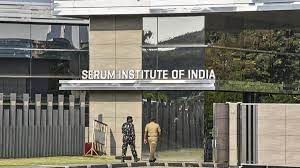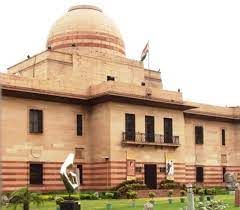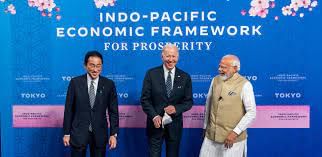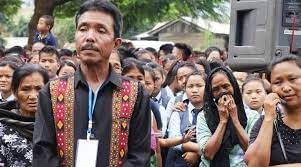UPSC Daily Current Affairs- 17th May 2023 | Current Affairs & Hindu Analysis: Daily, Weekly & Monthly PDF Download
GS-I
National Gallery of Modern Art
Why in News?
Prime Minister visited the National Gallery of Modern Art, New Delhi for viewing the exhibition ‘Jana Shakti: A Collective Power’ which celebrates the artistic diversity of India and is inspired by the themes highlighted in Prime Minister’s popular radio programme Mann ki Baat.
About NGMA:
- The National Gallery of Modern Art (NGMA) is the premier art gallery which aims to acquire and preserve works of modern art from 1850s onward.
- It is run and administered as a subordinate office to the Ministry of Culture, Government of India.
- Its collection includes works by artists such as Raja Ravi Verma, Rabindranath Tagore, Abanindranath Tagore, Gaganendranath Tagore, Nandalal Bose, Jamini Roy, Amrita Sher-Gil as well as foreign artists like Thomas Daniell.
- The main museum in New Delhi was established in 1954 by the Government of India.
- NGMA has two other branches, one at Mumbai and another at Bangalore.
Source: PIB
Matrilineality in Meghalaya
Why in News?
A tribal council’s order not to issue a Scheduled Tribe (ST) certificate to any Khasi person who adopts the surname of her or his father has triggered a war of words in matrilineal Meghalaya.
Matrilineal Society of Meghalaya
- Multiple tribes in Meghalaya, northeast India, practice matrilineal descent.
- Khasi and Garo people are the primary tribes discussed in the article.
- The term “Ki Hynniew Trep” (The Seven Huts) refers to the Khasi people, while the Garo people are also known as Achik people.
- These tribes have a proud heritage of matrilineality, but there are concerns about the decline of matrilineal traits.
Background
- Khasi people are an ancient tribe and are considered the largest surviving matrilineal culture in the world.
- Khasis, along with other subgroups like the Garo, reside in Meghalaya, as well as bordering areas of Assam and Bangladesh.
- The matrilineal tradition practiced by the Khasi people is unique within India.
- Matrilineal principles are emphasized in myths, legends, and origin narratives of the Khasi tribe.
- Reference to “Nari Rajya” in the epic Mahabharata likely correlates with the matrilineal culture of the Khasi and Jaintia Hills in Meghalaya.
Rights, Roles and Responsibilities
- Women play a dominant role in the matrilineal society of Meghalaya.
- The youngest daughter, known as Ka Khadduh, inherits ancestral property.
- Husbands live with their mother-in-law after marriage.
- Children take their mother’s surname.
- In case a couple has no daughters, they can adopt a daughter and pass property rights to her.
- The birth of a girl is celebrated, and there is no social stigma associated with women remarrying or giving birth out of wedlock.
- Women have the freedom to intermarry outside their tribe.
- Independent, well-dressed, unmarried women enjoy security and prefer not to get married.
- Many small businesses are managed by women.
Comparison between Garo and Khasi Practices
Bina Agarwal compared the Garo and Khasi practices in 1994. (Aspirants with Sociology optional are bound to remember the sociologist’s name.)
- Garo also practices matrilineal inheritance and matrilocal post-marital residence.
- Both tribes accept pre-marital sex by women, but adultery by women is punished.
- The Khasi practice duolocal post-marital residence, where the husband lives separately from the wife’s parents’ residence.
- The Khasi have an aversion to cross-cousin marriage.
Roles of Men and Political Representation
- Mothers or mothers-in-law are responsible for the care of children.
- Khasi men perceive themselves as having a secondary status and established societies to protect men’s rights.
- Representation of women in politics, legislative assembly, village councils, and panchayats is minimal.
- Women believe they handle money matters better and enjoy economic freedom.
Matrilineal, not matriarchal
- While society is matrilineal, it is not matriarchal. In past monarchies of the state, the son of the youngest sister of the king inherited the throne.
- Even now in the Meghalaya Legislative Assembly or village councils or panchayats the representation of women in politics is minimal.
Issues with the system
- Some Khasi men perceive themselves to be accorded a secondary status.
- They have established societies to protect equal rights for men.
- They express that Khasi men don’t have any security, they don’t own land, they don’t run the family business and, at the same time, they are almost good for nothing.
Source: The Hindu
GS-II
Indo-Pacific Economic Framework for Prosperity (IPEF)
Why in News?
India chose to join the Indo-Pacific Economic Framework for Prosperity (IPEF) but declined the Regional Comprehensive Economic Partnership (RCEP).
About IPEF:
- It is the S.-led economic grouping representing 40 percent of the global GDP, proposes to advance resilience, economic growth, competitiveness and fairness in member countries.
- However, some analysts view it as a move to counter China’s growing influence in the region.
- It is to counter the influence of China in the region and fill the vacuum created by not being a partner to RCEP.
- Partner Countries: Australia, Brunei, India, Indonesia, Japan, the Republic of Korea, Malaysia, New Zealand, the Philippines, Singapore, Thailand, Vietnam and the United States.
- Within days of its launch, IPEF expanded its membership to the Pacific Island states, with Fiji joining the initiative.
Pillars:
- The IPEF has four pillars: trade, supply chains, clean economy, and fair economy.
- India has joined the other three pillars but not trade.
Significance of IPEF:
Strategic importance:
- The US-led Indo-Pacific Economic Framework for Prosperity (IPEF) is strategically important for India.
- It will enhance India’s economic engagement in the region.
- The IPEF will help control the damage caused by the RCEP withdrawal as all the IPEF members save India and the US are signatories to the RCEP.
Supply chain building:
- Building resilient supply chains is one of the motives of the IPEF.
- India can consider members as alternative sources for its raw materials requirements.
- This could reduce India’s overdependence on China for these inputs.
Challenges:
- Economic dependency on the US: India needs to ensure that its strategic partnership with the US does not result in complete economic dependency.
- The IPEF is about developing an integrated economic system centred on the US, and excluding China.
- Impact on manufacturing sector: The fear of any trade deal’s impact on India’s manufacturing sector remains a concern.
- With the IPEF, there is a risk of unfair labour and environment standards compromising India’s comparative advantage in manufacturing.
- Limited policy space: India joining the IPEF could lead to a compromise on its ability to create a vibrant domestic ecosystem in emerging areas such as the digital economy and green products.
- Joining the IPEF could mean surrendering policy space for regulating Big Tech and digital policy-making.
- Impact on agriculture: The IPEF could have deep implications in agriculture, especially in terms of genetically modified seeds and food.
- Rushed negotiations: The IPEF is proposed to be concluded by November 2023, and real engagements only began late last year.
- The rush to conclude negotiations could mean that India misses out on addressing key concerns and issues.
Deep implications for India:
- The IPEF can already be seen to have deep implications in
- Agriculture, in terms of genetically modified seeds and food,
- Surrendering policy space for regulating Big Tech, and
- Compromising a comparative advantage in manufacturing because of unfair labour and environment standards.
- It will also seriously affect India’s ability to create a vibrant domestic ecosystem in emerging areas such as a digital economy and green products.
Way Forward:
India would stand to gain by being part of the supply chain initiative of the arrangement but it would need flexibility on the other initiatives. The one clear difference is of China versus the U.S. Developing a strategic partnership with the U.S. is India’s top foreign policy priority. Its relationship with China has, meanwhile, further deteriorated.
Source: The Hindu
The demand for a Kuki homeland
Why in News?
Recently, Manipur’s 10 Kuki-Zomi MLAs demanded a separate administration under the Constitution.
- This demand was made days after clashes between Manipur’s Kuki-Zomi tribes and the majority Meitei community that left more than 70 people dead.
A Kuki homeland
- Background
- The demand for a separate Kukiland dates back to the late 1980s, when the first and largest of the Kuki-Zomi insurgent groups, the Kuki National Organisation (KNO), came into being.
- The demand has surfaced periodically ever since.
- In 2012, it became increasingly clear that the demand for a separate Telangana state would be accepted. At that time, an organisation called the Kuki State Demand Committee (KSDC) announced a movement for Kukiland.
- The demand for a separate Kukiland dates back to the late 1980s, when the first and largest of the Kuki-Zomi insurgent groups, the Kuki National Organisation (KNO), came into being.
- Demand
- The KSDC claimed 12,958 sq km, more than 60% of Manipur’s 22,000 sq km area, for Kukis and Kukiland.
- The territory of Kukiland included:
- the Sadar Hills (which surround the Imphal valley on three sides),
- the Kuki-dominated Churachandpur district, Chandel, which has a mix of Kuki and Naga populations, and
- parts of Naga-dominated Tamenglong and Ukhrul.
- Unlike the Naga demand for a separate country, Kukis are only seeking a separate state within the Indian Union.
Reasons behind the demand of Kukiland
- Historical
- The KSDC and sections of the Kuki-Zomi community have maintained that the tribal areas are yet to be a part of the Indian Union.
- They have contended that after the defeat of the king of Manipur in the 1891 Anglo-Manipur war, the kingdom became a British protectorate.
- However,the lands of the Kuki-Zomi were not part of the agreement.
- The idea of the Zale’n-gam, or ‘land of freedom’
- As per the Kuki-Zomi people, the Kuki Zale’n-gam sprawled across a large part of India’s Northeast and contiguous areas in present day Myanmar.
- Under the Treaty of 1834, the British handed over a significant chunk of this land to Burma to appease the Ava or Burmese king.
- According to the KNO, the Zale’n-gam included the area up to the Chindwin River in Myanmar.
- It covered the bordering regions of India, the areas around the Nantalit river in northern Myanmar, and stretched to the Chin state in the south.
- In India, the Kuki homeland included:
- the hill districts of Manipur, including the Naga areas, Kanjang, Akhen, Phek, and parts of Dimapur in Nagaland,
- Karbi-Anglong, North Cachar Hills, and Halflong in Assam, and Tripura, as well as parts of the Chittagong Hill Tracts in Bangladesh.
- Over the years though, this imagination of the homeland has shrunk to that of a state created out of the hill areas of Manipur, including those dominated by the Naga tribes.
- Identity and Cultural Preservation
- Manipur has a diverse ethnic population with Meitis controlling the Valley, Nagas on the surrounding hills and Kukis interspersed in between.
- The Kuki community has a distinct cultural identity, language, and history.
- The Kukis are Manipur’s third major ethnic group, after the majority Meitei Hindus and the Naga tribes.
- Hence, the community is demanding a separate state to preserve their identity and culture.
- Clash with Naga group
- The community has alleged that Naga insurgent groups have been attempting to grab Kuki lands for decades.
- During the Naga-Kuki clashes of 1993 more than 1,000 Kukis were killed, and many times that number were displaced.
- Socio-economic development
- Some Kuki groups believe that a separate state would provide them with political power and control over their own resources which are largely controlled by the Meiteis.
- This would allow them to achieve socio-economic development.
- Administrative Autonomy:
- Kuki organizations argue that a separate state would enable them to make decisions on matters such as governance, law and order etc., based on their specific needs and aspirations.
- Recent violence in Manipur
- Days after the tribal Kuki community clashed with the Meiteis on May 3, the demand for separate Kuki State has resurfaced.
- A ‘tribal solidarity march’ was organised against the Manipur High Court’s direction to the State to take steps towards granting ST status to the non-tribal Meitei community.
- Violent clashes broke out at various places in Manipur during the course of this march.
- At least 71 people were killed and thousands were displaced in the violence.
- The clashes prompted the state government to issue shoot-at-sight orders, enforce a curfew and ban internet services.
- All the 10 Kuki MLAs (out of 60) in Manipur, including two state ministers, have raised the demand for a separate administration and separation from the state.
- These MLAs alleged that the violence that started on May 3 was perpetrated by majority Meiteis.
- It is tacitly supported by the existing government of Manipur.
- Days after the tribal Kuki community clashed with the Meiteis on May 3, the demand for separate Kuki State has resurfaced.
Source: Indian Express
India nears milestone with first indigenous Dengue Vaccine

Why in News?
Serum Institute of India and Panacea Biotec have applied to the ICMR’s call for Expression of Interest for collaborative Phase-III clinical trials for an indigenous dengue vaccine.
What is Dengue?
| Details | |
Transmission | Primarily transmitted through the bite of infected Aedes mosquitoes |
Virus and Serotypes | Dengue virus belonging to the Flaviviridae family Four distinct serotypes: DENV-1, DENV-2, DENV-3, and DENV-4 |
Symptoms | High fever, severe headache, joint and muscle pain, rash, pain behind the eyes, mild bleeding |
Severe Dengue | Progression to severe dengue can cause plasma leakage, bleeding, organ impairment |
Geographic Distribution | Endemic in more than 100 countries, particularly in tropical and subtropical regions |
Incidence and Global Impact | 100-400 million dengue infections occur annually globally, affecting healthcare systems and economies |
Vector and Breeding Sites | Aedes aegypti mosquito breeds in stagnant water containers found near human dwellings |
Treatment | No specific antiviral treatment available; supportive care, rest, fluid intake, symptom management |
Prevention and Control | Reduce mosquito breeding sites, proper water storage, cleaning of water containers, use of insecticides |
Dengue Virus Disease and Global Impact
- Dengue virus disease causes significant morbidity and mortality worldwide, with 2 to 2.5 lakh (200,000 to 250,000) cases reported annually in India.
- The global incidence of dengue has increased dramatically, with over half of the world’s population at risk.
- The World Health Organization (WHO) has identified dengue as one of the top ten global health threats in 2019.
- Currently, there is no specific treatment for dengue, highlighting the urgent need for effective vaccines.
Desirable Characteristics of a Dengue Vaccine
The ICMR highlights the desirable characteristics of a dengue vaccine, including a-
- Favorable safety profile
- Protection against all four serotypes of dengue
- Reduced risk of severe disease and death
- Induction of a sustained immune response and
- Effectiveness regardless of previous sero-status and age
Source: The Hindu
GS-III
Greenwashing

Why in News?
The Reserve Bank of India (RBI) will join 12 international regulators in the Global Financial Innovation Network (GFIN)’s first-ever Greenwashing TechSprint to develop a tool to help regulators and the market effectively tackle the risks of greenwashing in financial services.
About Greenwashing:
- Greenwashing refers to misleading the general public into believing that companies,
- sovereigns or civic administrators are doing more for the environment than they actually are.
- This may involve making a product or policy seem more environmentally friendly or less damaging than it is in reality.
- The term was coined by environmentalist Jay Westervelt in 1986.
- The phenomenon came into practice as consumers and regulators increasingly sought to explore planet-friendly, recyclable and sustainable ‘green’ products.
- By 2015, 66% of consumers were willing to shell out more for a product that was environmentally sustainable.
- Examples:
- In April 2022, the S. Federal Trade Commission penalised retailers Kohl and Walmart $5.5 million for misleading customers about their home furnishing products being made of bamboo.
- In reality, they were made of rayon — a fibre made from cellulose whose manufacturing entails the use of harmful chemicals such as sodium hydroxide that are hazardous to the environment.
Why does greenwashing happen?
- Greenwashing is done primarily for a company to either present itself as an ‘environment-friendly’ entity or for profit maximisation.
- It is achieved by introducing a product, catering to the inherent demand for environment-friendly products.
- In certain instances, it is done using the larger idea as a premise to cut down on certain operational logistics and providing consumer essentials.
Criticism against green washing:
- At the COP27 conference, Secretary-General of the United Nations (U.N.), António Guterres said, “We must have zero tolerance for net-zero greenwashing.”
- Although several companies, cities, states and regions have committed to reaching net-zero, in the absence of regulation, a lot of these pledges are not aligned with the science to achieve the same and do not have enough detail to be credible.
- Additionally, the inconsistent use of terms ‘net-zero’, ‘net-zero aligned’, ‘eco-friendly’, ‘green’ and ‘ecological’ among others are not accompanied with satisfactory evidence to substantiate their claims.
- If greenwash premised upon low-quality net zero pledges is not addressed, it will undermine the efforts of genuine leaders, creating both confusion, cynicism and a failure to deliver urgent climate action.
Green washing and financial sector:
- Ethical investing: Sustainable investing has become increasingly popular among millennials and impact investors concerned with ‘ethical investing’.
- Role of ESG credentials: Financial services providers expect increased scrutiny of a company’s Environmental, Social and Governance (ESG) credentials from regulators, shareholders, customers as well as other stakeholders.
- Transition funding: Financial institutions are expected to fund the transition towards renewable energy and discourage investments in further harnessing of conventional energy sources as coal, oil and gas.
Policy moves in India
- If the financial sector is to respond effectively to the demand for products that endeavour to introduce positive changes into the economy, it is imperative that ‘greenwashing’ is averted.
- In May 2022, market regulator Securities and Exchange Board of India (SEBI) constituted an advisory committee to look into all ESG-related matters.
Suggestive measures to combat ‘greenwashing’:
- Non-state actors cannot claim to be net-zero while they continue to build or invest in new fossil fuel supply.
- Thus, companies must work towards reducing emissions across their entire value chain and not limit the endeavour to only one part of the chain.
- Companies must not invest, through any means, in harnessing fossil fuels or engage in deforestation and other environmentally destructive activities.
- In addition to this, companies cannot compensate for this investment by means of cheap credits, which “often lack integrity”.
- For perspective, carbon credits work as a permit allowing the holder to emit a stipulated amount of carbon dioxide or other greenhouse gases.
- The committee also recommends a transition from voluntary disclosures (pertaining to net emissions) to regulatory norms.
- Verification and enforcement in a voluntary space can be particularly challenging.
Source: The Hindu
What is the London Interbank Offered Rate (LIBOR)?
Why in News?
The Reserve Bank of India (RBI) recently told banks and other regulated entities to ensure a complete transition away from the London Interbank Offered Rate (LIBOR).
About London Interbank Offered Rate (LIBOR):
- It is a benchmark interest rate at which major global banks lend to one another in the international interbank market for short-term loans.
- It acts as a benchmark for short-term interest rates.
- It is an indicator of the health of the financial system and provides an idea of the trajectory of impending policy rates of central banks.
- LIBOR is also the basis for consumer loans in countries around the world, so it impacts consumers just as much as it does financial institutions.
- How is LIBOR calculated?
- The rate is calculated and will continue to be published each day by the Intercontinental Exchange (ICE).
- It is computed for five currencies with seven different maturities ranging from overnight to a year.
- The five currencies for which LIBOR is computed are the Swiss franc, euro, pound sterling, Japanese yen and US dollar.
- Each day, ICE asks major global banks how much they would charge other banks for short-term loans.
- ICE benchmark administration consists of 11 to 18 banks that contribute for each currency. Only those banks that have a significant role in the London market are considered eligible for membership on the ICE LIBOR panel, and the selection process is held annually.
- The rates received from the banks are arranged in descending order, and the top and bottom quartiles are excluded to remove outliers.
- The arithmetic mean of the remaining data is then computed to get the LIBOR rate.
- The process is repeated for each of the 5 currencies and 7 maturities, thereby producing 35 reference rates.
- The most commonly quoted rate is the three-month U.S. dollar rate, usually referred to as the current LIBOR rate.
Source: Economic Times
Worldcoin: The Iris-scanning Cryptocurrency

Why in News?
Sam Altman, CEO of OpenAI, is reportedly raising $100 million for Worldcoin, a unique cryptocurrency.
What is Worldcoin?
- Worldcoin, co-founded by Altman and Alex Blania in 2019, aims to provide every human being on Earth with a share of its digital token.
- Worldcoin is a crypto project that seeks to establish a global identity and financial network for everyone.
- It utilizes a device called the Orb, which scans people’s irises to verify their uniqueness and humanity.
- Individuals who undergo the iris scan are rewarded with Worldcoin tokens.
- The World App, developed by Worldcoin, enables users to make payments, purchases, and transfers using Worldcoin and other digital assets.
- The project plans to launch in the first half of 2023 and distribute a total of 10 billion tokens, with 80% going to users.
Functioning of Worldcoin
- Worldcoin’s founders aimed to freely distribute shares of the digital token to every person on the planet.
- They envisioned it as a global distribution system for Universal Basic Income and a means to distribute profits generated by AI systems equally among people.
- To ensure fair distribution, Worldcoin utilizes biometric iris scans through the Orb device.
- The Orb scans the iris and converts it into a hash, which is impossible to recreate even if compromised.
- The iris hash and the user’s public key hash are sent to Worldcoin servers, and if the person is new to the system, the hashes are added to the database and the company’s blockchain.
Challenges and criticisms
- Worldcoin faces challenges regarding the accessibility of the Orb and expanding the user database.
- The project plans to incentivize sign-ups by offering coupons or access to loans.
- Concerns exist about the privacy and security of biometric data and potential misuse.
- Questions arise about the feasibility and scalability of reaching unbanked or underbanked populations.
- The value and utility of the Worldcoin token and its competitiveness with other cryptocurrencies or fiat currencies are also subject to scrutiny.
Source: Indian Express
|
52 videos|5374 docs|1136 tests
|





















